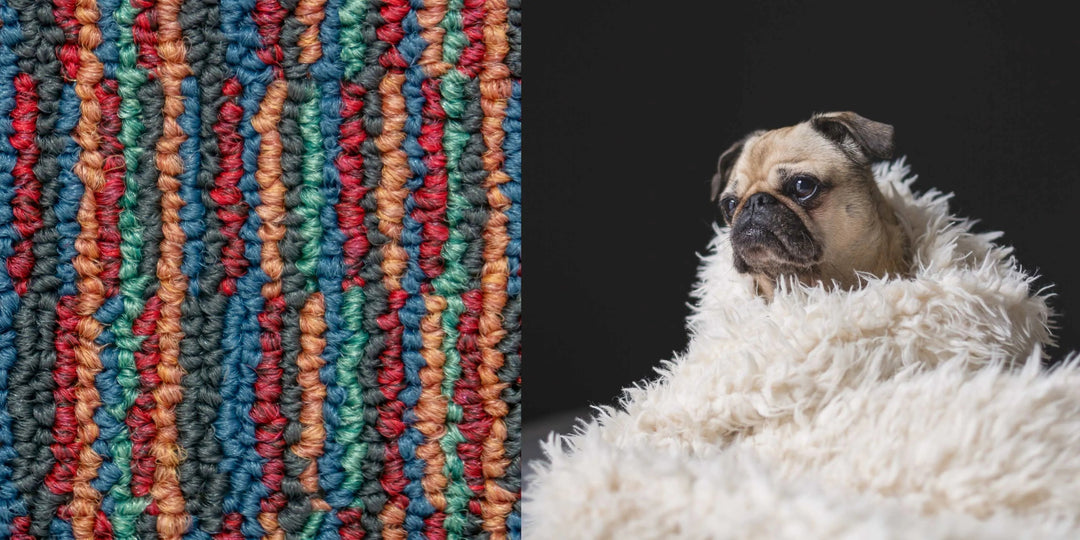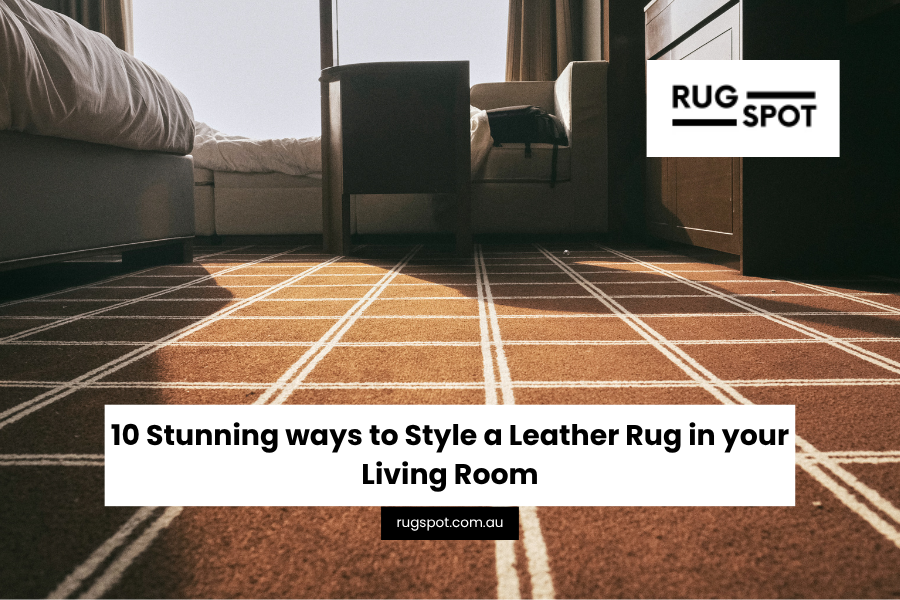Wool vs. Synthetic Rugs: Which is Right for You?
Introduction
Selecting that perfect rug for your place means considering material, durability, cost, and maintenance. The two major types you will come across are either wool or synthetic. Both have their own pros and cons, making it a tough decision. Let's bring to you a comprehensive comparison of wool vs. synthetic rugs through this article.
| Wool Rugs | Synthetic Rugs |
|---|---|
| Durability | Affordability |
| Comfort | Variety |
| Environmental Friendliness | Low Maintenance |
| Fire Resistance | Durability |
| Stain Resistance | Moisture Resistance |
| Cost | Comfort |
| Maintenance | Environmental Impact |
| Moisture Sensitivity | Heat Sensitivity |
| Style and Comfort | Chemical Sensitivity |
Understanding Wool Rugs
What Are Wool Rugs?
Woolen rugs are made from the fibers that grow on the body of a sheep. This is one of the best materials known for being durable, luxurious, and truly timeless.
Benefits of Wool Rugs
Woolen carpets have many benefits, such as:
- Resilience: It is strong enough to resist the impact of high traffic. Its elasticity enables it to bounce back after compression, making it resilient to wear compared to synthetics.
- Comfort: Wool is warm and soft by its very nature, lending a cozy underfoot feel to the element. Comfort comes with an added advantage in wool due to the nature of crimping in wool fibers.
- Environmental Friendliness: Wool comes from sheep whose fleece grows back anew each year; hence, it is a natural renewable resource. Wool rugs are biodegradable; hence, they will break down without harming the environment as synthetic rugs do.
- Fire Retardant: This characteristic shows that wool is naturally fire-resistant. It does not ignite easily and, when ignited, it burns slowly and self-extinguishes when the flame source is removed.
- Stain resistance: Wool possesses natural oils and scales on the surface of the fibers that act as a means of offering natural characteristics in the repelling of both liquids and dirt; this makes it more resistant to staining compared to most other synthetic fibers.
Drawbacks of Wool Rugs
Despite the many advantages, wool rugs have a few disadvantages:
- Cost: Generally, wool rugs cost more because the cost of making them is relatively high. While it may be a large initial investment into a wool rug, it often pays for itself over time due to its longevity and durability.
- Maintenance: Wool rugs should be vacuumed on a regular basis, and in some cases, professionally cleaned. Spills should be blotted up immediately to prevent staining, and wool can also be sensitive to aggressive cleaners.
- Sensitivity to Moisture: Wool is able to absorb moisture, while the rug is in the drying process the formation of mildew and mold can occur if the rug is not dried thoroughly. This problem can exist in a rug only if it is set in a location with high humidity or dampness and has poor ventilation.
Understanding Synthetic Rugs
What Are Synthetic Rugs?
Synthetic rugs are crafted from man-made fibers such as nylon, polyester, and polypropylene. The manufacturers of these materials have gone a long way in making them give the feel and the appearance of natural fiber but having certain advantages.
Benefits of Synthetic Rugs
Synthetic rugs offer several advantages which include:
- Affordability: Synthetic rugs are typically less expensive than wool rugs. They offer a budget-friendly way to add style and comfort to a space without a huge investment.
- Variety: As stated earlier, synthetic fibers absorb dye very well; hence the rugs come in a great variety. That makes it easy to select patterns and designs of your choice.
- Low Maintenance: They require less frequent cleaning and are easier to maintain. Most can be cleaned with common household cleaners and do not need professional cleaning. Many are treated to be stain-resistant, which makes them practical for homes that have kids and pets.
- Durability: High-quality synthetic fibers can be very durable and resistant to fading, even in direct sunlight. They're often resistant to abrasion and wear, making them suitable for high-traffic areas.
- Moisture Resistance: Synthetic fibers are resistant to mold and mildew, making it an ideal choice for damp areas or even moist areas, such as basements and bathrooms.
Drawbacks of Synthetic Rugs
Along with the good comes some bad. The following list outlines a few cons concerning synthetic rugs:
- Comfort: While synthetic rugs can be soft, they often don't measure up to the cushy, luxurious wool underfoot. Some also feel less natural underfoot compared to wool rugs.
- Environmental Impact: Synthetic rugs utilize resources that are non-renewable, like petroleum-based products. The environmental impact of the production processes of synthetic fibers may be more than the process for wool and other natural fibers.
- Heat Sensitivity: Some synthetic fibers are sensitive to heat and can melt, whether near sources of ignition like fireplaces or in places with direct strong sunlight. Therefore, care must be taken not to put hot objects on synthetic area rugs.
- Chemical Sensitivity: There is also the potential that some individuals could be sensitive to these chemicals used in the manufacture of synthetic rugs, which off-gas and in turn can result in an allergic reaction or respiratory problem.
Cost Comparison: Wool vs. Synthetic Rugs
Cost is a very important factor when it comes to choosing between wool and synthetic rugs. Here is an in-depth cost comparison, with further explanation behind the reasons for price disparities, and identification of cost-effective options for each.
Wool Rugs
Woolen rugs are always more expensive than the synthetic ones because of the nature of the material used. Wool is a premium, natural fiber derived from sheep with meticulous manufacturing processes. Parameters such as good quality for natural fiber, labor-intensive production, and the time-consuming process of sourcing and processing wool fibers further contribute to their higher cost. Additionally, wool carpets are usually more durable and very luxuriously soft, which adds to the price tag.
Synthetic Rugs
Synthetic rugs are more budget-friendly because their materials are easily found and mass-produced. In the present times, the production of synthetic materials is cost-effective, so it allows manufacturers to offer a broad spectrum of designs and colors simultaneously. If one is looking for a wool rug within a budget, then blends with wool and synthetic fibers are really a great compromise. These rugs often keep some of the luxurious properties that pure wool possesses but are more affordable. Synthetic rugs come in many low-cost options, such as polypropylene or polyester. They possess the look of natural fibers and actually give good durability for only a fraction of the cost.
When investing in a new rug, think of more than just the purchase price; include durability, maintenance, and even life expectancy. You can invest in a rug that can stand heavy foot traffic and is cleaned easily—resulting in more savings over time.
Durability: Wool vs. Synthetic Rugs
When it comes to durability, both wool and synthetic rugs have their traits and considerations. Here is a comparison of how each type stands up in different conditions:
Wool Rugs
Wool rugs are naturally resilient and very strong by nature, making them suitable for multiple environments with different wear characteristics. Moderate to high traffic doesn't have any effect on this rug; that's why it can be placed in the busiest areas of the home, such as the living room or hallway. They are innately strong because of the resilience of wool fibers, which helps the rugs spring back into shape with no problem of compression marks from furniture or constant footfalls. Moreover, wool area rugs are able to accommodate the playful antics of pets and children. Being stubborn to stains and dirt, they make a worthwhile proposition for any household with its share of little ones or furry friends. The natural oil in wool fibers creates a kind of barrier against spills, which makes it very easy to clean up any kind of mess without fear of it staining forever.
Synthetic Rugs
These are made of such materials as polypropylene, nylon, or polyester, making them strong and resistant to different kinds of conditions. For this reason, they prove to be very useful when installed in high-traffic areas at home. Their fibers are synthetically engineered to have the ability to withstand heavy use without getting flat and losing their form in most cases. They are also a more budget-friendly kind of alternative; synthetic rugs offer long-lasting performance at a lower price. These rugs are also ideal for homes with kids or pets. Many synthetic rugs are treated so that they will resist stains, giving an added protective layer that spills and messes won't easily penetrate. Their quick-dry feature after cleaning makes them a good choice for houses with young children or pets that easily make a mess.
In reality, both wool and synthetic rugs do offer durability but in varying capacities. Intrinsic resilience to stains is what reflects wool rugs, while synthetic carpets are unparalleled in taking a beating from heavy traffic, and that, too, at affordable prices. Consider what you really need and like, and be guided by the conditions in your living environment in making an informed choice between these two kinds of carpets.
Maintenance of Wool vs. Synthetic Rugs
To maintain the longevity and beauty of your rugs, both wool and synthetic alternatives require distinct approaches to maintenance. Let's look at the care and maintenance requirements for each type:
Wool Rug Maintenance
Wool rugs are naturally resilient and can survive normal wear and tear. Regular care is required to keep them in immaculate condition. Here are some methods to care for wool area rugs:
Vacuum your wool rug at least once a week to remove dirt, dust, and debris that may have accumulated on the surface and inside the fibers.
Rotate Periodically: If the rug is in a high-traffic area, rotate it every six months for even wear.
Synthetic Rug Maintenance
Synthetic rugs are well-known for their long-lasting quality and ease of care. They can withstand high foot traffic and resist stains and fading. To keep your synthetic rug looking good, consider the following care tips:
Vacuum regularly: Just like wool rugs, synthetic rugs require regular vacuuming to remove loose dirt and debris.
Spot clean as needed. Blot spills and stains quickly with a clean cloth and a mild detergent.
Low Moisture Cleaning: When cleaning synthetic rugs, avoid using too much water, since this might damage the backing material.
Rotate the rug occasionally to prevent uneven wear, especially in high-traffic areas.
Outdoor Use: If using a synthetic rug outdoors, ensure it is designed for outdoor use and follow the manufacturer's care instructions for exposure to the elements.
By following these care and maintenance tips, you can enjoy the full beauty and longevity of both wool and synthetic rugs. Whether you choose the natural elegance of wool or the durability of synthetic materials, proper care will ensure your rugs remain a stylish and functional part of your home for years to come.
Style and Comfort: Wool vs. Synthetic Rugs
When deciding between natural wool rugs and synthetic rugs, one of the most important considerations is the variety of styles available. Wool rugs are admired for their timeless beauty and luscious feel. They come in a variety of designs, from classic oriental patterns to modern abstract motifs, so you may select the perfect rug to fit your home decor. The natural fibers of wool rugs provide a warm and inviting atmosphere, adding to the overall appeal of your living rooms.
Wool Rugs Style and Comfort
Wool rugs, known for their softness and natural elasticity, provide a plush and cozy feel underfoot. Their ability to regulate temperature and absorb moisture adds to the overall comfort they offer, making them ideal for colder seasons. With proper care, wool rugs can retain their softness and durability for many years.
Synthetic Rugs Style and Comfort
On the other hand, synthetic rugs have come a long way in replicating the look and feel of natural fibers. These rugs offer a vast selection of styles, patterns, and colors, catering to a diverse range of tastes and preferences. Synthetic rugs often boast vibrant hues and can mimic the appearance of high-end materials at a fraction of the cost. With advancements in technology, manufacturers have crafted synthetic rugs that closely resemble the plushness of wool, making them a comfortable and budget-friendly alternative.
Comfort is an important factor to consider when deciding between wool and synthetic rug. While synthetic rugs might be soft, they generally lack the silky, opulent feel of wool. Some synthetic rugs feel less natural underfoot than wool rugs. Synthetic rugs, while not as naturally soft as wool, have made significant improvements in terms of comfort. They frequently use synthetic fibers such as nylon or polyester to provide a comfortable and attractive surface to walk on. These rugs are ideal for high-traffic areas since they are more durable than wool rugs while also providing greater comfort. They frequently use synthetic fibers such as nylon or polyester to provide a comfortable and attractive surface to walk on.These rugs are well-suited for high-traffic areas, as they are more resistant to wear and tear compared to wool rugs.
Key Considerations When Choosing Between Wool and Synthetic Rugs.
When picking between wool and synthetic rugs, consider the following aspects to guarantee you get the best option for your needs:
Location: For high-traffic areas, think about durability. Wool is durable, but it takes more upkeep. Synthetic fibers, such as nylon or polypropylene, are also more durable and cleanable. Synthetic rugs are a better choice for damp locations because they are moisture resistant.
Budget: If money is a primary consideration, synthetic rugs are a more reasonable alternative. However, investing in a high-quality wool rug can pay off in the long term due to its durability.
Aesthetic and texture: Wool rugs have a natural, sumptuous texture and a timeless appearance.
FAQs
What are the main differences between wool and synthetic rugs? The main differences lie in the material, durability, cost, and maintenance. Wool rugs are natural, durable, and luxurious but more expensive and require more maintenance. Synthetic rugs are more affordable, easier to clean, and available in a variety of styles, but may not offer the same comfort and environmental benefits as wool.
Are wool rugs worth the investment? Yes, wool rugs are worth the investment if you prioritize durability, comfort, and environmental friendliness. They can last for many years with proper care, providing a luxurious and timeless addition to your home.
Can synthetic rugs mimic the look of wool rugs? Yes, synthetic rugs can mimic the look of wool rugs. Advancements in technology have allowed manufacturers to create synthetic fibers that closely resemble the appearance and feel of natural fibers like wool.
Which type of rug is better for high-traffic areas? Both wool and synthetic rugs can be suitable for high-traffic areas. Wool rugs are naturally resilient and can withstand heavy foot traffic, while synthetic rugs are engineered to endure heavy use without flattening or losing shape.
How do I clean a wool rug? Vacuum your wool rug regularly, rotate it periodically, spot clean spills immediately, and schedule professional cleanings every 12-18 months. Avoid exposure to direct sunlight to prevent fading.
Are synthetic rugs environmentally friendly? Synthetic rugs are generally less environmentally friendly compared to wool rugs because they are made from non-renewable resources and have a higher environmental impact during production. However, some synthetic rugs are designed to be recyclable, which can mitigate their environmental footprint.




